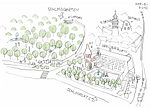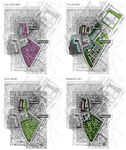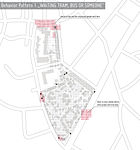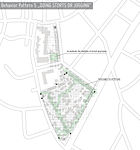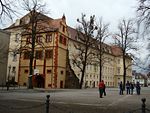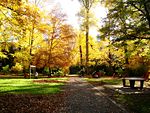Windowscape: Difference between revisions
No edit summary |
No edit summary |
||
| Line 9: | Line 9: | ||
| '''Country''' || style="background:Lavender"|''The Netherlands'' | | '''Country''' || style="background:Lavender"|''The Netherlands'' | ||
|- | |- | ||
| ''' | | '''Authors''' || style="background:Lavender"|''Oana Baloi'' | ||
|- | |- | ||
| colspan="3" align="center" style="background:silver"| [[Image:Moa.jpg|300px]] | | colspan="3" align="center" style="background:silver"| [[Image:Moa.jpg|300px]] | ||
| Line 15: | Line 15: | ||
| ||style="background:Lavender"| | | ||style="background:Lavender"| | ||
|- | |- | ||
| colspan="3" align="center" style="background:silver"| <googlemap version="0.9" lat=" | | colspan="3" align="center" style="background:silver"| <googlemap version="0.9" lat="48.997072" lon="8.4743" zoom="16" width="300" height="250"> | ||
<> | 48.996785, 8.475445 | ||
</googlemap> | |||
|} | |} | ||
==Short Introduction to the Area of Study== | |||
== Short Introduction to the Area of Study == | Wageningen is a small city within The Netherlands with fast increasing number of inhabitants due to the presence of academic and research activity in the domains of life science. Everyday landscape relates to land usage and planning, in relation to spatial issues of daily activities of the inhabitants. Every space has its own story. Living a story through landscape gather the human perception over the landscape from the early morning landscape seen on the dorm window, to the view from the offices windows, and nevertheless, the landscape in between. | ||
The present study aims to gain knowledge about the human perception over the landscape by investigating the meaning of landscape seen in the window frame of their everyday activities. The specific research questions include the usage, perception and engagement of different people to their everyday landscape. | The present study aims to gain knowledge about the human perception over the landscape by investigating the meaning of landscape seen in the window frame of their everyday activities. The specific research questions include the usage, perception and engagement of different people to their everyday landscape. | ||
The subject interact with the functions of a sustainable urban plan, assessing the landscape for the comfort of inhabitants. Therefore, the study represents a research over the reasonable and comfortable everyday landscape, from the point of view of the users | The subject interact with the functions of a sustainable urban plan, assessing the landscape for the comfort of inhabitants. Therefore, the study represents a research over the reasonable and comfortable everyday landscape, from the point of view of the users | ||
== Exercise 1: Sketching the Landscape == | == Exercise 1: Sketching the Landscape == | ||
| Line 31: | Line 31: | ||
* Creation of analytical drawings and sketches | * Creation of analytical drawings and sketches | ||
* Presentation of results | * Presentation of results | ||
''Please upload a selection of your drawings/sketches/mental maps and add them to the image gallery'' | |||
=== Sketches and Drawings === | |||
<gallery caption=" " widths="150px" heights="150px" perrow="5"> | <gallery caption=" " widths="150px" heights="150px" perrow="5"> | ||
Image: | Image:schlossplatz_01_web.jpg|Row of trees in Schlossplatz | ||
Image:schlossgarten_01_web.jpg|Schlossgarten with autumn colors | |||
Image:schlossgarten_platz_01_web.jpg|Schlossplatz and Schlossgarten | |||
Image:schlossgarten_skizze_web.jpg|Sketch | |||
Image:brunnen_web.jpg|the empty fountain fascinates a child | |||
Image: | |||
Image: | |||
Image: | |||
Image: | |||
</gallery> | </gallery> | ||
| Line 64: | Line 50: | ||
* topography, open spaces, built, green, traffic and water structures on different layers. *Definition of zones with coherent character | * topography, open spaces, built, green, traffic and water structures on different layers. *Definition of zones with coherent character | ||
*Description of this character. | *Description of this character. | ||
'''Character of Schlossplatz:''' | |||
Schlossplatz is very open, visible and central place in Durlach. Due to its traffic situation, with cars, tram and busses driving through and the shops that are located there it’s the place which they experience everyday, where they meet each other. People coming there usually stay shortly to wait the tram or to buy bread etc. When there is an event going on there, the place really becomes the heart of town, with all people converging there. | |||
'''Character of Schlossgarten:''' | |||
Schlossgarten is hidden and closed, like a private garden, because it is staying on a lower level as road and has wall, moreover there are many old and large trees which contribute to this atmosphere. The garden is never full but the citizens stay cosy and longer. | |||
<gallery caption=" " widths="150px" heights="150px" perrow="5"> | <gallery caption=" " widths="150px" heights="150px" perrow="5"> | ||
Image: | Image:1_analyse_area_green_water_topo.jpg|Green network and water | ||
Image: | Image:2_historical_analyse_garden.jpg|Transformation of garden through the centuries | ||
Image: | Image:3_historical_analyse_schloss.jpg|Transformation of castle before and after destruction | ||
Image: | Image:4_area_topo.jpg|Topography | ||
Image: | Image:5_area_traffic.jpg|Flow lines of traffic and people | ||
Image:6_open_space.jpg|Open spaces | |||
Image:layers_1.jpg | |||
Image:layers_2.jpg | |||
Image:cake.jpg | |||
</gallery> | </gallery> | ||
| Line 83: | Line 79: | ||
* Preparation of short presentation | * Preparation of short presentation | ||
''Please publish your findings here'' | |||
<gallery caption=" " widths="150px" heights="150px" perrow="5"> | |||
Image:pattern_1.jpg|activity: waiting | |||
Image:pattern_2.jpg|activity: walking | |||
Image:pattern_3.jpg|activity: sunbathing | |||
Image:pattern_4.jpg|activity: sitting | |||
Image:pattern_5.jpg|activity: sports | |||
Image:pattern_6.jpg|activity: playing | |||
Image:pattern_7.jpg|activity: talking | |||
Image:pattern_all.jpg|overall activities | |||
Image:usage.jpg|areas of high usage | |||
Image:christmas_market.jpg|behaviour on the medieval christmas market! | |||
</gallery> | |||
<gallery caption=" " widths="150px" heights="150px" perrow="5"> | <gallery caption=" " widths="150px" heights="150px" perrow="5"> | ||
Image: | Image:schlossplatz_bahn.JPG|tram stop at schlossplatz | ||
Image: | Image:5_schlossplatz.JPG|people are playing boules on weekends | ||
Image: | Image:6_s_garten.JPG| | ||
Image: | Image:7_s_garten.JPG|playground 1 | ||
Image: | Image:11_s_garten.JPG| | ||
Image:12_s_garten.JPG|roses garten | |||
Image:15_ps_garten.JPG|playground 2 | |||
Image:weihnachtsmarkt_1.JPG|christmas market 1 | |||
Image:weihnachtsmarkt_2.JPG|christmas market 2 | |||
Image:weihnachtsmarkt_3.JPG|christmas market 3 | |||
</gallery> | </gallery> | ||
== Exercise 4: Communication Concepts == | == Exercise 4: Communication Concepts == | ||
| Line 114: | Line 125: | ||
<gallery caption=" " widths="150px" heights="150px" perrow="5"> | <gallery caption=" " widths="150px" heights="150px" perrow="5"> | ||
Image:yourimagename.jpg|your image text | Image:yourimagename.jpg|your image text | ||
Image:yourimagename.jpg|your image text | Image:yourimagename.jpg|your image text | ||
| Line 131: | Line 141: | ||
[[Category:Case Study]] | [[Category:Case Study]] | ||
[[Category:Everyday Landscapes Case Study]] | [[Category:Everyday Landscapes Case Study]] | ||
[[Category:Everyday Landscapes Working Group | [[Category:Everyday Landscapes Working Group | ||
[[Category:Everyday Landscapes | [[Category:Everyday Landscapes Parks and Gardens]] | ||
About categories: You can add more categories with this tag: "[[Category:Category Name]]", add your categories | About categories: You can add more categories with this tag: "[[Category:Category Name]]", add your categories | ||
Revision as of 09:03, 13 December 2011
---> back to overview of Case Study List
Short Introduction to the Area of Study
Wageningen is a small city within The Netherlands with fast increasing number of inhabitants due to the presence of academic and research activity in the domains of life science. Everyday landscape relates to land usage and planning, in relation to spatial issues of daily activities of the inhabitants. Every space has its own story. Living a story through landscape gather the human perception over the landscape from the early morning landscape seen on the dorm window, to the view from the offices windows, and nevertheless, the landscape in between. The present study aims to gain knowledge about the human perception over the landscape by investigating the meaning of landscape seen in the window frame of their everyday activities. The specific research questions include the usage, perception and engagement of different people to their everyday landscape. The subject interact with the functions of a sustainable urban plan, assessing the landscape for the comfort of inhabitants. Therefore, the study represents a research over the reasonable and comfortable everyday landscape, from the point of view of the users
Exercise 1: Sketching the Landscape
Time frame: October 25 - November 15, 2011
Student activities:
- Creation of analytical drawings and sketches
- Presentation of results
Please upload a selection of your drawings/sketches/mental maps and add them to the image gallery
Sketches and Drawings
Exercise 2: Landscape Layers
Time frame: November 15 - 29, 2011
- time based changes and 'landscape biography', and/or:
- topography, open spaces, built, green, traffic and water structures on different layers. *Definition of zones with coherent character
- Description of this character.
Character of Schlossplatz: Schlossplatz is very open, visible and central place in Durlach. Due to its traffic situation, with cars, tram and busses driving through and the shops that are located there it’s the place which they experience everyday, where they meet each other. People coming there usually stay shortly to wait the tram or to buy bread etc. When there is an event going on there, the place really becomes the heart of town, with all people converging there.
Character of Schlossgarten: Schlossgarten is hidden and closed, like a private garden, because it is staying on a lower level as road and has wall, moreover there are many old and large trees which contribute to this atmosphere. The garden is never full but the citizens stay cosy and longer.
Please publish your findings here
Exercise 3: Behaviour Patterns
Time frame: December 6 - 20, 2011
- How do people behave in this area? How do they use the space? What is important for them?
- Observation of study area, interviews with local people and mapping of use patterns.
- Preparation of short presentation
Please publish your findings here
Exercise 4: Communication Concepts
Time frame: December 19, 2011 - January 17, 2012
- Based on the different landscape assessment approaches students will develop a communication concept for their area of study
- Which measures would be necessary for enhancing the awareness for the area?
- Students are free to choose their method.
- Yourimagename.jpg
your image text
- Yourimagename.jpg
your image text
- Yourimagename.jpg
your image text
- Yourimagename.jpg
your image text
- Yourimagename.jpg
your image text
Please publish your findings here
Image Gallery
- Yourimagename.jpg
your image text
- Yourimagename.jpg
your image text
- Yourimagename.jpg
your image text
- Yourimagename.jpg
your image text
References
* Please make sure that you give proper references of all external resources used.
* Do not use images of which you do not hold the copyright.
* Please add internet links to other resources if necessary.
[[Category:Everyday Landscapes Working Group About categories: You can add more categories with this tag: "", add your categories



